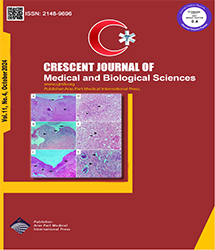
| Original Article | |
| Ex Vivo Angiogenesis Modeling: A Simple and Cost-Effective Model for Studying Tumor Angiogenesis | |
| Parisa Mohammadi1, Azam Rahimpour1,2, Farnaz Ahmadi-Dehlaghi3, Kamran Mansouri3 | |
| 1Department of Tissue Engineering and Applied Cell Sciences, School of Advanced Technologies in Medicine, Shahid Beheshti University of Medical, Sciences, Tehran, Iran 2Medical Nanotechnology and Tissue Engineering Research Center, Shahid Beheshti University of Medical Sciences, Tehran, Iran 3Medical Biology Research Center, Health Technology Institute, Kermanshah University of Medical Sciences, Kermanshah, Iran |
|
|
CJMB 2024; 11: 207-214 DOI: 10.34172/cjmb.2023.43 Viewed : 2980 times Downloaded : 2773 times. Keywords : Endothelial cells, Neovascularization, Pathologic, Three-dimensional, Tissue culture technique |
|
| Full Text(PDF) | Related Articles | |
| Abstract | |
Objectives: Endothelial cells (ECs), as the main cell types in the micro- and macro-vascular structure, are crucial to many vital physiological processes occurring in human body among which are both physiologic and pathologic angiogenesis. Due to their great heterogeneity, it is recommended that the ECs of each tissue should be studied separately. Recently, targeting angiogenesis in cancer has become one of the main strategies for cancer management. Accordingly, this study aimed to introduce a simple, cost-effective, and practical model for studying tumor angiogenesis, which can contribute to studies focused on antiangiogenic-based treatments for cancer. Materials and Methods: In this original study, the explants of both normal and tumor tissues of mouse lung and 4T1 mouse cancer model were cultured separately in a collagen type 1 bed. Sprouting ECs formed a network of vessel-liked structures that were photographed as a model for investigating cancerous and normal angiogenesis. These ECs were then isolated from the collagen matrix using collagenase to confirm their endothelial nature. Results: The results showed that the cells invading the collagen matrix and forming a vessel-liked network were of endothelial nature. They were also found to have EC-specific characteristics and express EC-specific markers. These embedded cells may have been treated with the desired drug or further isolated from the collagen matrix and investigated in a genome or protein level. Conclusions: In sum, this modeling had the potential to become a suitable model for studying the pathological angiogenesis such as tumors in human and animal tissues. |
Cite By, Google Scholar
Google Scholar
PubMed
Online Submission System
 CJMB ENDNOTE ® Style
CJMB ENDNOTE ® Style
 Tutorials
Tutorials
 Publication Charge
Medical and Biological Research Center
About Journal
Publication Charge
Medical and Biological Research Center
About Journal
Aras Part Medical International Press Editor-in-Chief
Arash Khaki
Deputy Editor
Zafer Akan



















